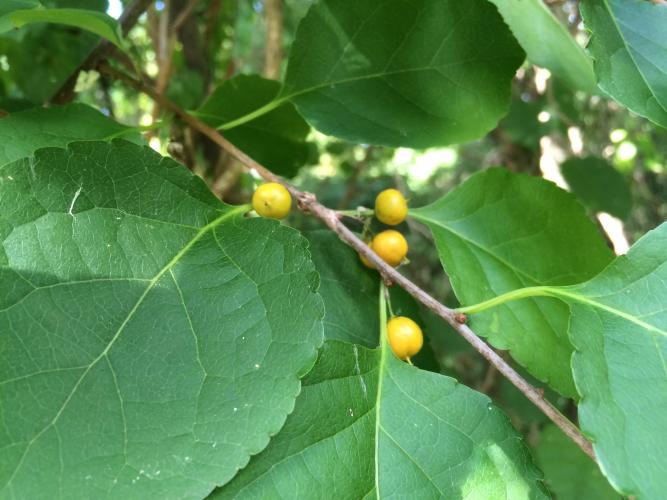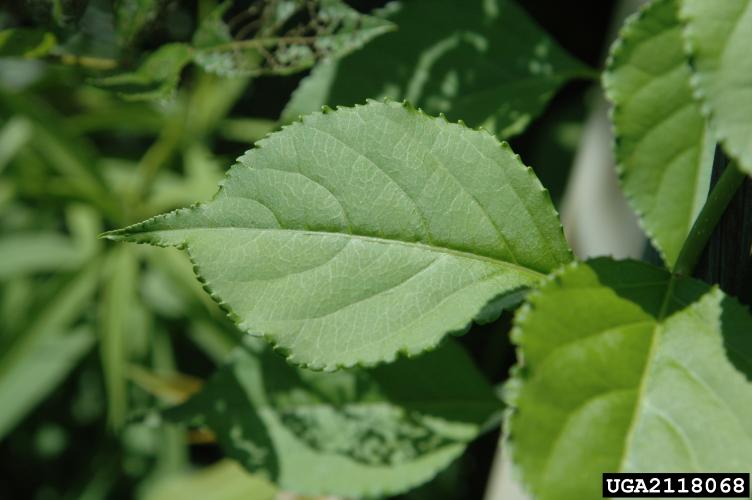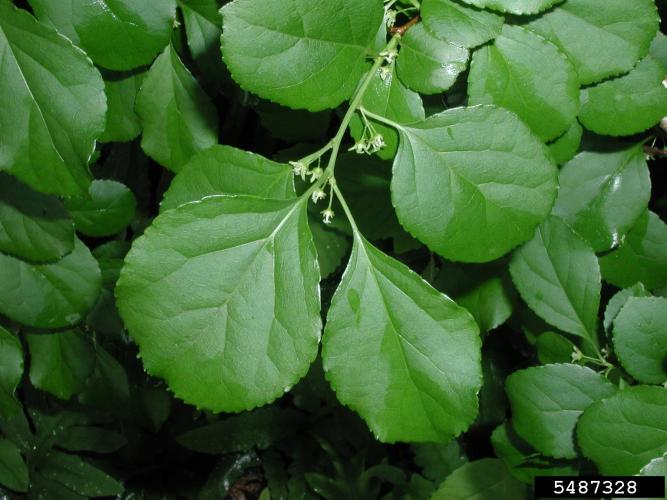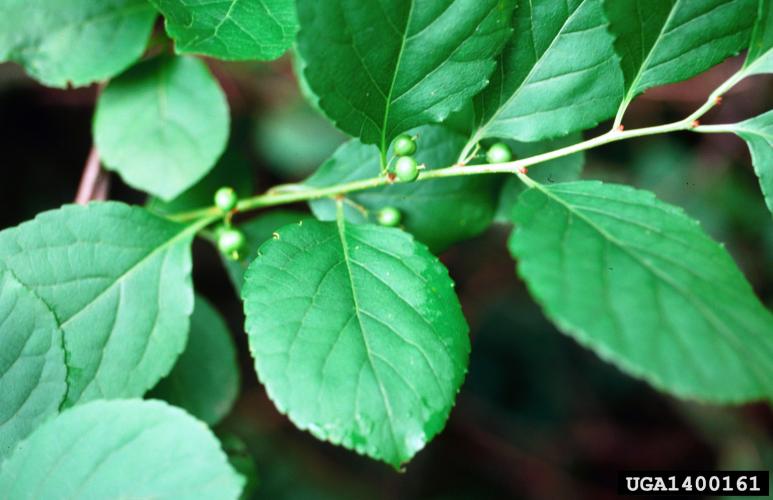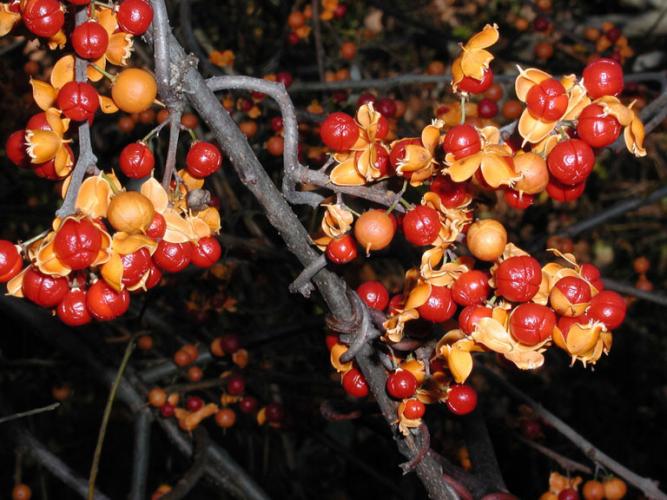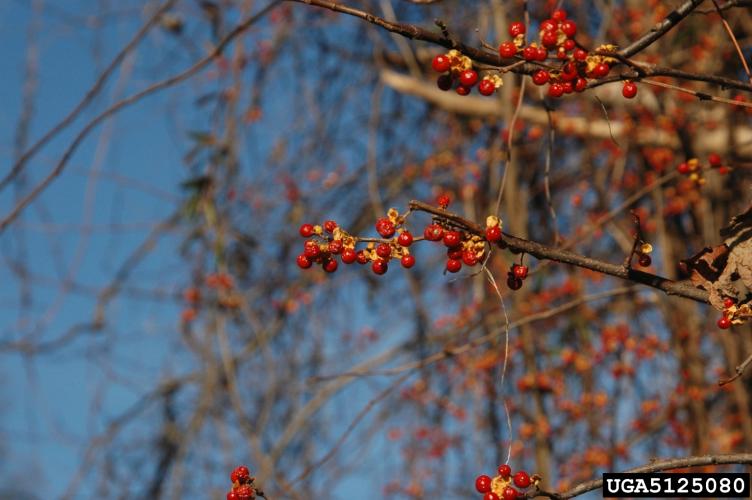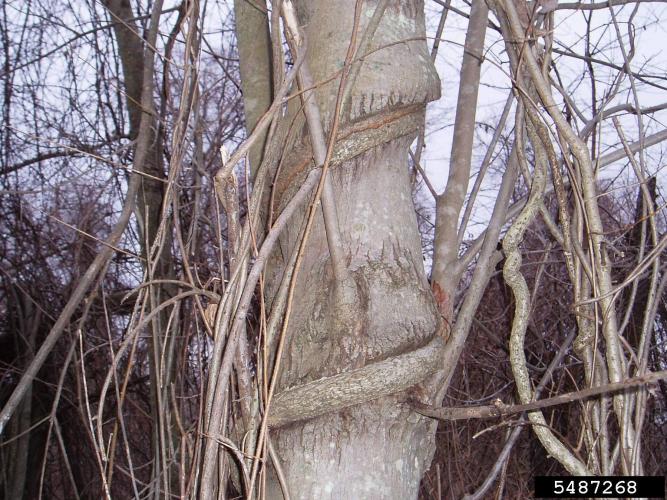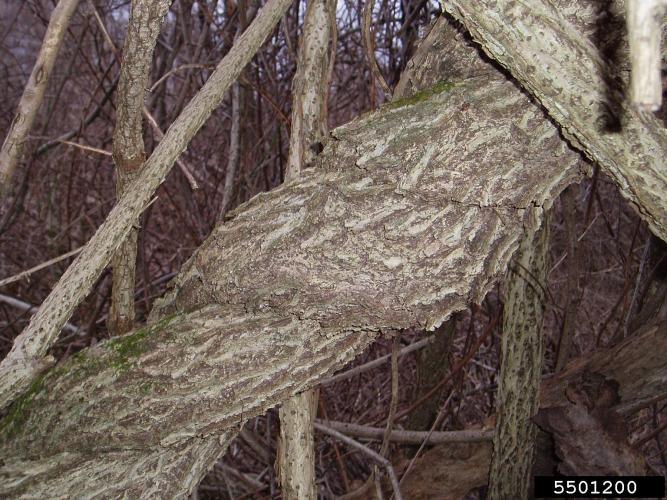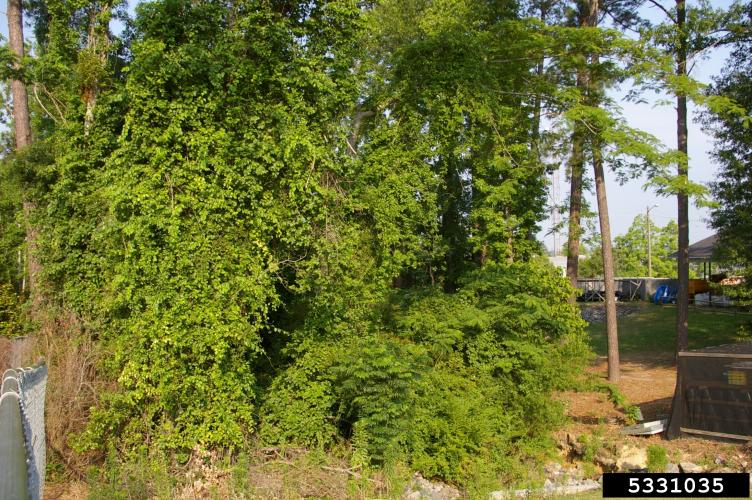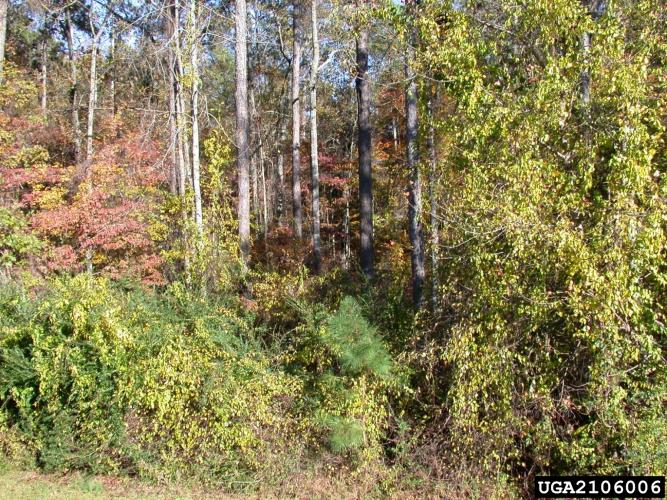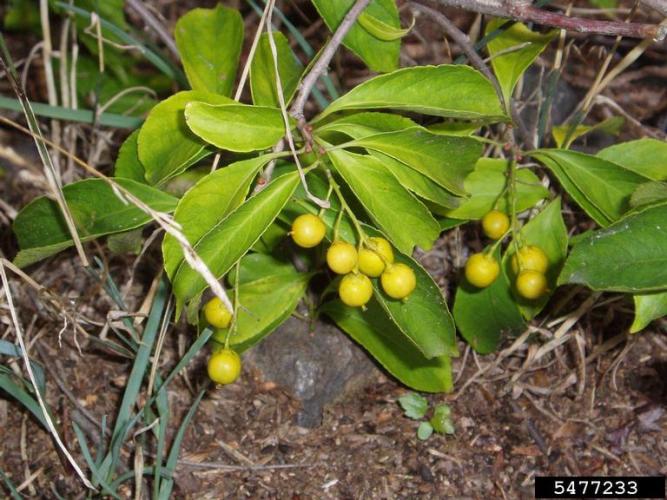Bittersweet, Asiatic
Identification
Appearance
Asiatic bittersweet is a deciduous, woody vine that climbs saplings and trees and can grow over 60 feet in length.
Foliage
The alternate, elliptical to circular leaves are light green in color and 2-5 inches long.
Flowers
Small, inconspicuous, axillary, greenish-white flowers bloom from May to early June. Oriental bittersweet closely resembles American bittersweet (Celastrus scandens). The main difference: Celastrus scandens has flowers and fruits at the terminal ends of branches; Celastrus orbiculatus has flowers scattered along the entire stem.
Fruit
The small globose fruits are green when young; ripen to yellow; then split to reveal showy, scarlet berries that persist into winter.
Check out the downloadable fact sheet above.
Biology
Ecological Threat
This fast growing vine growth encircles trees and girdles them, slowly killing the tree. Vines can completely cover other vegetation creating a carpet of vines over a large area. Birds and other wildlife eat the fruit, thus distributing the seeds. It hybridizes with American bittersweet (Celastrus scandens) potentially leading to loss of genetic identity for the native species.
Origin
Originally introduced as an ornamental in 1860s
Habitat
Fields, forests, forest edges, disturbed sites, ornamental plantings, shade tolerant
Life Cycle
Asiatic bittersweet primarily reproduces by seed but can also reproduce asexually (runners, roots, root fragments, and root crown can all sprout). Plants are dioecious meaning that male and female flowers exist on separate plants. Insects, primarily bees, and wind pollinate the flowers. Flowers bloom May through June and then fruits are produced in July and October. A plant typically produces more than 350 fruits and each fruit contains between 3-6 seeds. The seeds have a high germination rate (90%) and remain viable for less than one year. Fruits remain on vine well into the winter.
Vermont Distribution
iNaturalist project: Mapping for Healthy Forests Vermont
Present in Vermont
How You Can Help
Native/non-invasive alternatives
Virginia creeper (Parthenocissus quinquefolia)
Native Perennials and Shrubs for Vermont Gardens
Alternatives to Common Invasive Plants and Characteristics of Select Alternatives
Citations
Photo Credit
E Spinney, VT FPR
Chris Evans, University of Illinois, Bugwood.org
Nancy Loewenstein, Auburn University, Bugwood.org
2308050,5477233, Leslie J. Mehrhoff, University of Connecticut, Bugwood.org
Chris Evans, University of Illinois, Bugwood.org
Linda Haugen, USDA Forest Service, Bugwood.org
James R. Allison, Georgia Department of Natural Resources, Bugwood.org
Information Credit
Center for Invasive Species and Forest Health, Oriental Bittersweet
Video: Purdue University Extension, Invasive Plant Species: Oriental Bittersweet
